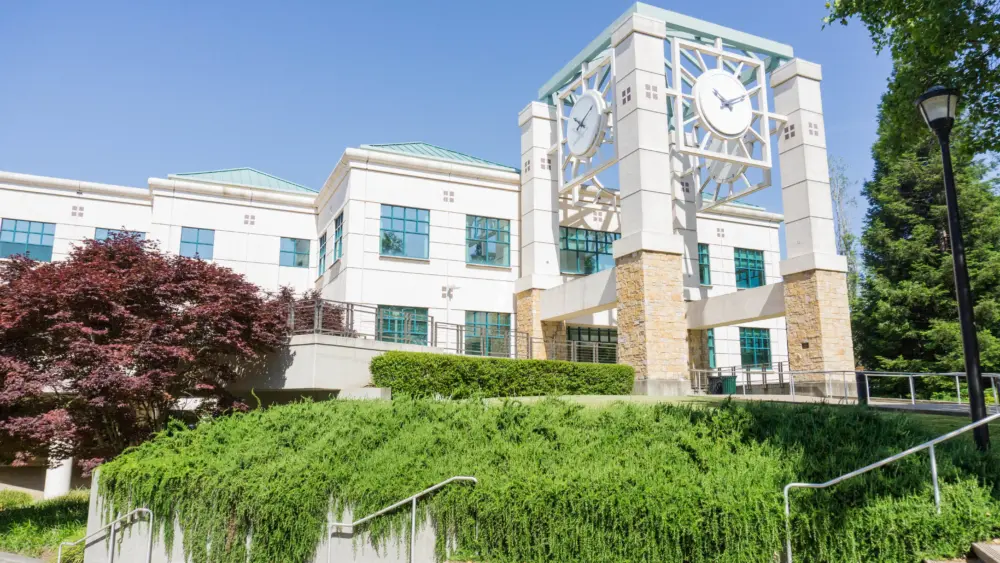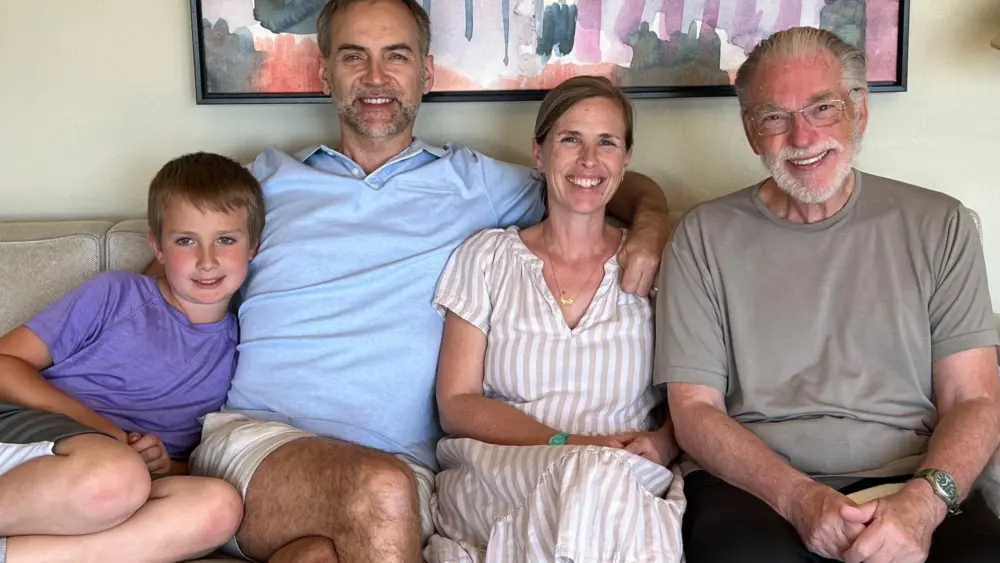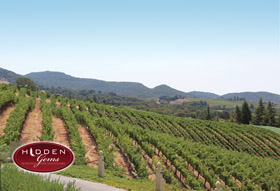 Located just a 10-minute drive from downtown Napa, Coombsville feels much more far removed than it actually is. It’s an area made up of small, family ranches and vineyards dotted throughout its oak-studded, rolling hillsides. It borders the Napa River to the west, Mt. George to the north, Imola Avenue to the south and the Vaca Range to the east, encompassing 11,000 acres of largely untouched land (only about 1,400 acres are planted to vines). Its elevation ranges from near sea level to close to 2,000 feet at its highest mountain peaks.
Located just a 10-minute drive from downtown Napa, Coombsville feels much more far removed than it actually is. It’s an area made up of small, family ranches and vineyards dotted throughout its oak-studded, rolling hillsides. It borders the Napa River to the west, Mt. George to the north, Imola Avenue to the south and the Vaca Range to the east, encompassing 11,000 acres of largely untouched land (only about 1,400 acres are planted to vines). Its elevation ranges from near sea level to close to 2,000 feet at its highest mountain peaks.Because of its proximity to San Pablo Bay to the south, it’s the second-coolest of Napa’s sub-AVAs (behind Carneros). This often means long-standing morning fog, cool afternoon breezes and mild temperatures. Even on the hottest days (yes, it can get quite toasty), residents can count on coastal influences to cool them down.
The area’s most dominating feature is its horseshoe-shaped caldera that rings its north, east and south sides. It’s the result of a collapsed ancient volcano that covered the area with ash and cobblestone-filled layers of rich loams. The alluvial fans that shaped the area created a multitude of microclimates. Thus, it offers ideal conditions for growing everything from Pinot Noir and Chardonnay to Bordeaux varieties, most notably Cabernet Sauvignon. Its cool growing season is long and steady, with an early bud break and late harvest, resulting in well structured, balanced wines with character unique to the area, including low alcohol content and rich, elegant flavor.
Coombsville history
Coombsville is named after Nathan Coombs, who purchased much of the areain 1847 from Nicholas Higuerra, who’d originally received it as a land grant from General Mariano Vallejo. Coombs is most known as the person who founded the city of Napa. When his descendants later subdivided the property into parcels, they created a map of “Coombvsille,” coining the term that’s stuck for more than 100 years. In 1880, Antonio Carbone opened a winery on Coombsville Road (it’s now being restored). That same year, Henry Hagen produced 35,000 gallons of wine at his Cedar Knoll Vineyard and Winery in Coombsville (now Palmaz Vineyards/Nathan Coombs Estate). Aside from those, the region was mostly known for orchards and livestock. Today, there are only a handful of orchards, yet there’s still plenty of livestock, especially sheep, cows, goats and horses. Some of the nation’s top quarter horse racers were bred at Rapp Ranch, where Shadybrook Estate has recently established a winery.
In 1966, Duncan and Pat Haynes planted their Coombsville vineyard with Pinot Noir and Chardonnay. Bill Cadman, who established Tulocay Winery in 1975, purchased some of his first grapes from that vineyard (he still does today, from the same block). Frank Farella planted 26 acres in 1979, while John Caldwell established his vineyard in 1982. It wasn’t until the 1990s that Coombsville grapes became more well known among up-valley producers including Joseph Phelps, Far Niente, Pahlmeyer, Robert Mondavi and many others.
In 2010, the Coombsville Vintners and Growers Association formed to help promote the region, including beginning an AVA petition. While its first attempt (which suggested calling the area Tulocay) was rejected by the TTB, a second petition, using the name Coombsville, was approved in 2011, thanks in large part to the efforts of Tom Farella (Frank’s son).
When you visit the area, consider making a day of it—and keep in mind that all wineries there are by appointment only. It’s also a popular area for golf, road biking and equestrian activities.
Coombsville Vintners and Growers
Today, Jimmy Kawalek serves as president of the Coombsville Vintners and Growers Association’s all-volunteer board. His goal is to ensure each member is treated equally and fairly. “We’re trying to let people know we exist,” he says. “We’re the city of Napa’s AVA, but many people who live here don’t know about it. On the other hand, a lot of people have been growing grapes here a long time, and more are starting to move in,” he says, mentioning Italics and Favia as two of the newest wineries.
“The hallmark of what we’ve done out here is that we’re hands on—nobody’s cranking out 100,000 cases—and the region is gaining in notability. Margrit Mondavi lived here—God rest her soul—and Dan Duckhorn lives here now. Warren Winiarski owns Arcadia vineyard. It says a lot to me that he believes in the area. What a great endorsement. We’re honored he chose property here.”
Today, there are more than 50 members in the association. “We joke around,” says Kawalek: “Coombsville: Who knew?” And we like it to be our little neck of the woods, but want to get the word out, too. It’s a way to help small producers get recognized. There are thousands of wineries in Napa and Sonoma counties now, so how does one stand out? By promoting the AVA, its history, tradition and character. Tell the story and engage people. We want to present what we feel is a very unique situation: A cool group of people who grow and produce great wines,” he adds. “Come and visit. See what old Napa used to look like.”
Farella Vineyard
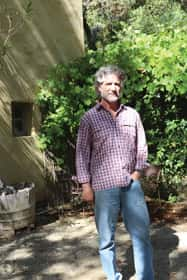 When Frank Farella purchased his property in the mid-1970s, his son Tom was still in high school. “This was my dad’s dream since I can remember,” he says. “He planted grapes when I went to UC Davis to learn winemaking and viticulture and sold the fruit until he started his own brand in 1985, making Sauvignon Blanc and Merlot. I wanted to make wine in different situations, so after my Napa harvest jobs, I went to Sonoma and then to France and Oregon. I returned after my tenth year making wine; I sat down with dad and asked him if he wanted to expand, as he’d always mentioned in passing. I needed something bigger than the 400-square-foot place he’d built. This was in 1991, the year of our first varietal Cabernet Sauvignon. We maxed out our little winery and I custom crushed some of the wines up-valley. The new winery was completed in 1997.” Tom has been overseeing operations in the vineyard, winery and marketplace since his return to the home vineyard.
When Frank Farella purchased his property in the mid-1970s, his son Tom was still in high school. “This was my dad’s dream since I can remember,” he says. “He planted grapes when I went to UC Davis to learn winemaking and viticulture and sold the fruit until he started his own brand in 1985, making Sauvignon Blanc and Merlot. I wanted to make wine in different situations, so after my Napa harvest jobs, I went to Sonoma and then to France and Oregon. I returned after my tenth year making wine; I sat down with dad and asked him if he wanted to expand, as he’d always mentioned in passing. I needed something bigger than the 400-square-foot place he’d built. This was in 1991, the year of our first varietal Cabernet Sauvignon. We maxed out our little winery and I custom crushed some of the wines up-valley. The new winery was completed in 1997.” Tom has been overseeing operations in the vineyard, winery and marketplace since his return to the home vineyard.The vineyard produces about 100 tons of grapes annually, keeping just 20 for its own wine production. “I basically keep 2,000 cases because, that way, I get to do more of the fun stuff,” Farella continues. “I just want to make wine. I don’t want the rock star lifestyle. It’s tricky to maintain a brand that way. Our wines aren’t fashioned for scoring. I make wine with a European approach: They’re food-friendly with a bit more acidity and less tannin. The essence for me is balance versus power. So many wines are ruined by too much oak. People think oak makes it taste expensive, but it’s just like excessive make-up. I prefer natural beauty,” he says. “A bottle of wine should tell a story. It’s harder to make a nuanced, dynamic, natural bottle than it is to go for an overblown style that might score higher in the near-term but be dead and never evolve in the long run. I’m aiming for the person who loves good wine; not the ones going for the next big thing.”
His west-facing vineyard is in the heart of the AVA and is planted mostly to Cabernet Sauvignon, but also has Merlot, Malbec, Syrah, Sauvignon Blanc and Chardonnay. All wines are estate grown and none of the reds are filtered or fined. “Removing anything from a wine with fining always takes other things with it,” says Farella. He focuses on pH levels (acidity) prior to and during harvest. “The pH tells me everything I need to know,” he says. “It’s essential for longevity and approachability. I’m seeking the balance where it’s ‘yummy’ but also has acidity and is ageworthy. I want vibrancy with as little handling as possible.”
He’s been doing it this way from the beginning. Take the Sauvignon Blanc, for example, which he describes as his dad’s “baby.” The 2015 has honeysuckle on the nose, with tropical notes and a nice acid balance. “Watching the eras go by and seeing how this wine never changes is fun,” he says. The 2012 Merlot is equally distinctive. Aged on very little new oak (only 6 to 8 percent), its inherent spicy components shine through, with bright flavors and hints of anise on the palate.
Covert Estate
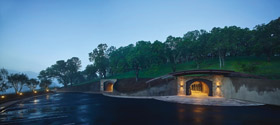 Covert Estate is just that—you can’t even see it from the road, and that’s exactly how the partners who built it (Cal and Pam Nicholson; Dave and Laura Nestor; and Julian and Elan Fayard) wanted it when the project was begun in 2012. Its five-acre vineyard, planted in 2002, has three clones of Cabernet Sauvignon (the rarest is 341), as well as Petit Verdot, Syrah and Cabernet Franc. The property has two types of soil, hillside sediment and rock, and winemaker Julien Fayard says he’s happy to have both, as it adds diversity to the wine. He’s also a fan of Farella’s wines. “One reason I bought here was tasting Farella’s older vintages,” he says. “Their complexity develops over time, like in France,” says the French native. “Lower alcohol wines that take time to develop are the signature of Coombsville,” he adds.
Covert Estate is just that—you can’t even see it from the road, and that’s exactly how the partners who built it (Cal and Pam Nicholson; Dave and Laura Nestor; and Julian and Elan Fayard) wanted it when the project was begun in 2012. Its five-acre vineyard, planted in 2002, has three clones of Cabernet Sauvignon (the rarest is 341), as well as Petit Verdot, Syrah and Cabernet Franc. The property has two types of soil, hillside sediment and rock, and winemaker Julien Fayard says he’s happy to have both, as it adds diversity to the wine. He’s also a fan of Farella’s wines. “One reason I bought here was tasting Farella’s older vintages,” he says. “Their complexity develops over time, like in France,” says the French native. “Lower alcohol wines that take time to develop are the signature of Coombsville,” he adds.“We named the estate Covert because the people here are used to their landscape,” says Fayard. “We wanted to remove ourselves from visibility but remain productive; to exist with the smallest impact. The business integrates into the landscape on purpose. The winery is underground and we recycle all our water. We’re doing a lot of environmental stewardship without having a ‘green’ image. It’s just layered in. It’s in our guts, but not on our T-shirts,” he says.
Fayard does a lot of small fermentations and vineyard designates. The wines are aged in the caves in barrels that are stacked only two high so they’re easy to reach. They’re racked straight to the tank and back; a simple process that requires less time and energy and affords less mistakes.
The Covert tasting room is designed with reclaimed wood, metal, concrete, glass and elegant, plush furnishings. “We’re looking at an elevated experience—somewhere high-end collectors can feel in their element. Third-party referrals via these collectors are a huge way to get the word out about our winery. We also have lots of direct contact with people for a more intimate, customized experience.
The estate can produce a maximum of 8,000 cases annually, spread among four estate labels and other labels sources in the valley.
Fayard grew up in Provence, where his uncle owned Cru Classé Chateau St. Marguerite. He and his cousins grew up picking grapes and studying together. Following his studies, Fayard worked at Chateau Lafite Rothschild and others. He met his wife, Elan, an American who was learning French, in 2000, and they moved to the United States together in 2006. “I worked at Quintessa for harvest and I loved the quality of life and entrepreneurial spirit,” he says. “I then had a chance to work with Philippe Melka, who works with high-end vineyards. I was there for eight vintages and helped build three wineries during that time. It really accelerated the learning curve and gave me a detailed understating of Napa and making wine here.” He also took a three-year program at UC Davis to study business and receive an MBA.
In 2007, Fayard started his Azur label, a rosé of Syrah. “I created a product that became a standard for rosé,” he says. “I proved I could make a wine—and a business—on my own.” The salmon-colored rosé is modeled after the Provence-style rosés, aromatically pleasing with a fruit-forward nose, with a balance of fresh fruit and brightness that are rounded out with texture and body. The fruit is sourced from vineyards in the Sierra foothills and El Dorado County (and this particular wine is made at a facility there).
Another label is Empreinte. Its 2012 Sauvignon Blanc was aged 14 months in 100 percent new French oak. “The idea is to show that Sauvignon Blanc can age,” says Fayard. “I’m hoping the drinking window is eight to 10 years.” The grapes come from the Heritage Vineyard in Rutherford. The result is built like a red wine, with appropriate texture, mouthfeel and layers, as well as tropical fruit on the nose and palate with notes of honey.
Fayard describes his winemaking style as “non-interventionist: You have what you have, and over polishing and manipulating will ruin it. It can affect the aging process and you’d homogenize the style of all your wines,” he says. “Let the fruit do its thing. Yes, oak is a big manipulation, but it’s also a natural building tool.”
Fayard selects barrels to encourage a slow aging pattern. He also chooses to focus in on specific vineyard blocks to fully showcase their potential. The 2013 Moulds family Empreinte Cabernet Sauvignon is 100 percent varietal from a specific block in Oak Knoll. The young wine has dark fruit aromatics with a firm backbone, intense complexity and a lively mouthfeel. “I like fruit that has texture, layers and depth, with freshness on the nose for elegance,” he says. Mission accomplished.
The 2013 Covert Estate Cabernet Sauvignon is also 100 percent Cab and focuses on the property’s Cabernet clone. “I want to plant more of clone 341,” says Fayard. “It has its own life. It also reflects Coombsville with depth, concentration, layers and only 14 percent alcohol.” Its nose is playful and the fun continues as it dances on the palate.
He appreciates Coombsville’s homey feel. “You come here because you want to,” he says. “It’s a destination. You don’t just drive by.” He also notes the huge variation in types of wine but the overall lower alcohol, fresh fruit and balanced acidity.
Tulocay Winery
 Bill Cadman, winemaker and owner of Tulocay Winery, moved to Napa with his wife, Barbara, in 1971 after noticing its wine quality was improving. “I grew up in Oakland, but not with wine. I was working at the Pacific Coast Stock Exchange when my boss and coworkers got me into it. We could buy a case of Bordeaux at 10 Minna Street for an affordable price.” And that was it—he decided to be where the action was.
Bill Cadman, winemaker and owner of Tulocay Winery, moved to Napa with his wife, Barbara, in 1971 after noticing its wine quality was improving. “I grew up in Oakland, but not with wine. I was working at the Pacific Coast Stock Exchange when my boss and coworkers got me into it. We could buy a case of Bordeaux at 10 Minna Street for an affordable price.” And that was it—he decided to be where the action was.“I got hired at Charles Krug because it was harvest and they’d hire anybody [because harvest is always short-handed],” he says. In 1972, they purchased property in Coombsville. Cadman worked at Clos du Val, Beringer and Heitz Cellars before a friend suggested he use the two outbuildings on his own property to make wine. He installed water and electricity, purchased the necessary equipment and was good to go. “It’s why we buy all our grapes,” he says. “I procrastinated buying vineyards, and I’m still waiting for the prices to go down.
“It was easier to start a winery back then,” he adds. “We liked it here because Napa was a backwater agricultural town. If you went to work in San Francisco and said you’d been in Napa, they’d think of the mental hospital. Napa wasn’t synonymous with wine until long after we got here. People were into jugs back then.”
He says Coombsville is still a lot like those days—very quiet, without any resorts or hotels. At night, there’s an occasional coyote howl. And there are a lot of quail, wild turkeys and deer running around.
The first wine Cadman produced was a 1975 Pinot Noir from Haynes Vineyard, and he’s used grapes from that same block ever since. (Ancien also uses Haynes Vineyard fruit). “One thing that led to the consistency in our Pinot Noir was that it’s come from the same family vineyard, managed by Fernando Delgado, this whole time. It’s sold to the same family winery,” he says. The result is truly lovely, with great acidity, a nose of cherries and red fruit with a hint of earth and a lively feel on the palate.
Up until now, he’s also purchased Chardonnay grapes from Haynes (among other vineyards), but this year, it will come from another Coombsville vineyard called D’Ambrosio.
The winery produces two labels of Chardonnay: Cadman and Tulocay. Cadman is steel fermented but has a lush, rounded mouthfeel, while the Tulocay label sees both new and neutral oak. Both are true reflections of where they came from—elegant, well balanced and absent of flab.
For Cabernet Sauvignon, he’s purchased grapes from various locations over the years. Since 2013, grapes have come from a vineyard only a half-mile from his property. Cadman also produces Syrah (also from Haynes, it has juicy, blueberry elements and is well rounded and perfectly dry—a classic, cool climate offering) and, occasionally, Zinfandel (that he sources from out of the area). His daughter, Brie, relocated to Coombsville last year after finishing her studies at UC Berkeley. She took winemaking and viticulture classes at Napa Valley College and started winemaking with her father in 2012. “My sister and I have been on the bottling line since we could stand,” she says. “Now I live here and do it full time [she’s also assistant winemaker at Judd’s Hill].”
Shadybrook Estate
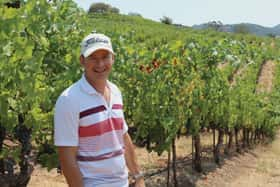 Rudy Zuidema, consulting winemaker at Shadybrook Estate, says his current assignment with the winery and estate (where he also lives) is due to “a whole bunch of things that kept going right.”
Rudy Zuidema, consulting winemaker at Shadybrook Estate, says his current assignment with the winery and estate (where he also lives) is due to “a whole bunch of things that kept going right.”In 2009, he was working at White Cottage Ranch on Howell Mountain. The winery donated a portion of a home winemaking lot to the Napa Valley Barrel Auction that year, and Zuidema’s expertise was included. “Alice [and David] Alkosser [owners of Shadybrook Estate] purchased the lot. I showed her the vineyard and she helped with picking, then checked back a couple times over the year. She loved how things were going and asked if I wanted to visit her estate and pick some grapes for blending. I was picturing a couple dilapidated rows on someone’s private property, so I was hesitant. But when I saw her property, I knew it would turn out great.
“The next year [2010], she asked if I wanted to pick some test batches to see if they could go commercial. We made two barrels of Cabernet Sauvignon and one of Malbec and yielded 75 cases.”
The estate itself is 21 acres, about 13 of which are planted to Cabernet Franc, Cabernet Sauvignon, Merlot, Petit Verdot and Malbec. The rolling hillside property features north, top and south exposures and a different clone is used for each. The vineyard has good drainage and all of its areas are treated differently. “It adds unique characters. The hard thing is to keep them from going away when blended,” he says. “I want to include all the vineyard’s attributes.”
Up until this year, the winery has used custom crush facilities to make its wine. Today, it’s redesigning a winery, formerly called Chateau Lane, to create a visitor center. Located on the former Rapp Ranch, the idea is to maintain the equestrian feel while also ensuring an intimate, luxury experience. A front patio features ample seating, a fire pit and a bocce ball court, while inside there’s a commercial kitchen for cooking classes and other events. The winery is also working with the equestrian center, which shares the property, so visitors can go on trail rides if desired.
There are 12 acres of Cabernet Sauvignon and plans for two labels: Rapp Ranch, an entry-level brand of about 400 cases of Cabernet Sauvignon, a Bordeaux blend, Chardonnay and Pinot Noir (the last two are purchased off-site); and Shadybook Estate, the top-tier offering of about 1,000 cases. The new facility plans its grand opening this fall and production is planned to double over the next two to four years. Its on-site, state-of-the-art winemaking facility is experiencing its first harvest this year.
“It’s so great to have everything under one roof,” says Associate Winemaker Michael Andrews. It lets us attend to more details and to know everything that’s going on.” The two have been working together for more than 10 years. Zuidema attributes this to their similar winemaking philosophy. “Absolutely perfect is too perfect,” he says. “A few leaves and stems bring something to the wine. Coombsville has an Old World character. There’s a bit of earth and funk because of the cooler climate. There’s nice core fruit in the middle, which makes for a classic wine that has balanced acid, aging potential and pure flavor without too much winemaker intervention.”
The 2014 Shadybrook Platiné Blanc (which means white platinum; a proprietary name) is a blend of 70 percent Semillon and 30 percent Sauvignon Blanc. “It’s our take on a white Bordeaux,” says Zuidema. “It’s built around texture as much as flavor. It’s tank fermented for the first half of the time then goes into neutral barrels, where it’s in contact with the lees and can breathe and change.” The result has hints of citrus on the nose and then moves into a blend of maple and honey, smooth and crisp with a solid acid structure. This is a red wine lover’s white wine.
The 2013 Malbec is the smallest-yet-most popular estate wine (only 50 to 100 cases annually). Zuidema describes Malbec as “the hyena of grapes,” so he adds a bit of Cabernet Sauvignon to give it a strong backbone. The result is a structured body with Bordeaux-like flavors that are firm yet graceful and complex.
Zuidema admits Cabernet Sauvignon is his wine of personal choice. “I love all wines, but I want Cabernet Sauvignon with my dinner,” he says. “The Coombsville Cabernet is unique because the area is so cool. It comes in smelling like white chocolate and espresso beans.”
The wine is aged in about 50 to 55 percent new French oak in total. It’s in 100 percent new for the first three to five months, then 100 percent neutral for six to eight months to let them grow and show their personality; I then add different percentages of new French oak as needed to support those traits.” All vineyard sections are picked separately and treated differently to create as many ingredients as possible. “It’s our spice rack so we can create our own recipes,” says Zuidema. The wine is mostly Cabernet Sauvignon, with a bit of Petit Verdot and Cabernet Franc blended in. It has firm tannins and is well structured and straightforward, with dark fruit on the mid-palate and a finale of dark chocolate.
Trotter 1/16 Winery
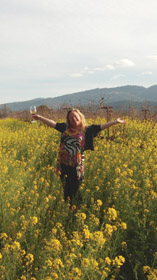 Stephanie Trotter Zacharia began making wine in 2011 after working in the wine industry since 1994. Having grown up in Philadelphia, Pa., as the second-youngest of 16 children, she set off for Alaska at 18 years old. Once she reached the West Coast, she made it to Penngrove and found she was down to her last $100. So she bought a 1970 Chevy Impala and “moved into it. I got a job three days later,” she says. Today, she makes two separate Cabernet Sauvignons that originate from Coombsville.
Stephanie Trotter Zacharia began making wine in 2011 after working in the wine industry since 1994. Having grown up in Philadelphia, Pa., as the second-youngest of 16 children, she set off for Alaska at 18 years old. Once she reached the West Coast, she made it to Penngrove and found she was down to her last $100. So she bought a 1970 Chevy Impala and “moved into it. I got a job three days later,” she says. Today, she makes two separate Cabernet Sauvignons that originate from Coombsville.“I love my two little Coombsville vineyards,” she says. “My Trotter 1/16th label is a bootstrap winery. I make only 75 to 100 cases per year; all vineyard-designated, varietal specific wines.” Her first Coombsville offerings are from the 2013 vintage. Prior to that, she was picking grapes from her previous employer’s vineyard in St. Helena.
That first year was rough, she remembers, since there was a lot of mold due to the rains at harvest. “We sorted every grape by hand,” she says. She began looking for a small, organic vineyard that was different and eventually was introduced to her first Coombsville vineyard (Oak Canyon Ranch) by Daphne Amory, a local biodynamic viticulture consultant. “It’s tiny—only 36 rows, dry-farmed and completely organic. I get about a ton from it,” says Trotter Zacharia. “It’s a west-facing, hillside slope, and the red soil, I think, adds a deep fragrance to the wine,” she says.
In 2015, she found an even smaller Coombsville vineyard of Cabernet Sauvignon (E & S Vineyard), which is on more level ground. “Being that Coombsville is in the eastern part of Napa proper, it gets more of the western sun. Its proximity to the bay is really awesome. The extended hang time develops the fruit flavors I want—black fruit as opposed to the red,” she adds.
“My winemaking style is the same for both vineyards. I want the barrels to be the only spice rack and the grapes to be the meat of the dish. I put the new wine in brand new French oak for the first year, then finish it in more neutral barrels. They’re aged 29 months then bottled two to three months before release.
“When I pick the grapes, I’m shooting for 25 to 26 degrees Brix. I want you to taste the vineyard, not the wood or any overripe, jammy fruit,” she adds.
“The grapes are picked by hand with friends. We celebrate in the vineyard afterward, then we de-stem and hand sort. Fruit is open-top, bin fermented then barreled for malolactic in a room that gets heated with a wood stove. It’s definitely old school,” she says.
The resulting wines are balanced and multilayered with well masked tannins. “They have aging potential of 15 to 20 years but are drinkable within the first year following release. My goal is to create silky wines that are round, with complex layers of flavor, minus the grippy tannins,” says Trotter Zacharia.
Of Coombsville, she says it’s a “secret gem of an AVA. I feel a connection, too, because it’s the 16th AVA in Napa County. The region is bucolic and unspoiled. There’s no shopping or huge wineries. I drive past herds of sheep on my way to the vineyard.
“As a winemaker,” she adds, “I love making the vineyards sing, and Coombsville has a beautiful voice.”
Coombsville Wineries and Growers
Following is a listing of Coombsville Vintners and Growers Association members as of summer 2016. Some are growers and/or wineries located in the AVA, and some are wineries that purchase Coombsville fruit and designate it on their label. (If you’re a member and don’t see your name here, please let us know and we’ll add to to the online version of this article.)
Angel Acres
Arcadia Vineyards
Barking Dog Vineyard
Bennett Vineyard
Cairdean Estate
Christian Vineyards
Daviana
Dickhaus Valley Vineyards
Faniani Vineyards
Ferrogiaro Vineyard
Francis Vineyards
Lunar Ridge Vineyard
Simpkins Family Vineyard
Wieruszowski Vineyard


